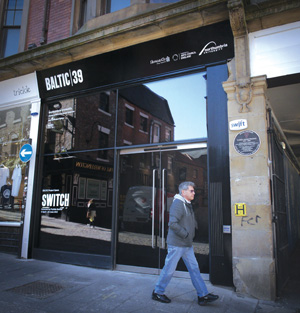Collective effort
Godfrey Worsdale explains how a partnership between BALTIC and the University of Northumbria is building a unique cultural hub in the heart of Newcastle

In July of this year BALTIC Centre for Contemporary Art will be ten years old. It’s the largest institution of its kind in the UK, so it might seem curious to discover that the anniversary is being marked by the launch of a second substantial venue just across the River Tyne in Newcastle. Last year BALTIC welcomed over 630,000 visitors to its Gateshead premises, but perhaps a more interesting statistic, is that market segmentation established through audience surveys suggests that a significant proportion of these people would now describe themselves as being experienced and confident consumers of contemporary art. As BALTIC becomes more established, this figure continues to grow. In turn, this raises a question about how we might continue to extend engagement with these visitors in new and more textured ways, whilst continuing to build and develop audiences amongst first-time visitors and less effectively targeted communities.
As these issues were being considered in Gateshead, Newcastle City Council, in partnership with Arts Council England (ACE), was working with an artists’ collective to develop a new facility north of the river. However, as challenges met that project, not least its eventual delivery being overshadowed by the recessionary context, the opportunity for BALTIC to become a part of the collaboration presented an opportunity to bring collective challenges together and create a new way forward. In parallel with these discussions, BALTIC had also entered into a new partnership agreement with Northumbria University and its School of Arts and Social Sciences. The principles of the collaboration were to enhance standards of research and learning within both institutions, and as with any partnership, to improve resilience and sustainability, further augmenting our respective business models.
Following discussion with ACE and the City Council, BALTIC’s Board of Trustees agreed to extend the gallery’s identity and activities to the new building with a brief to develop its programmes and protocols in a more experimental direction. In the spirit of the initial roots of the project, these ideas were predicated on the fact that two of the five floors of the former print warehouse would continue to house more than 30 professional artists in newly developed studios. The top floor of the building had been developed to house a significant exhibition space, divided into two separate parts by a stairwell that links the gallery to other activity in the building, and this will host BALTIC’s experimental programme.
The circle was closed when Northumbria University saw the opportunity to cement its relationship with BALTIC by moving its third year BA, MA and doctoral research students into the remaining two floors of the building. This places students in immediate contact with various levels of professional practice but also refreshes much of that practice by introducing the vitality and energy of an academic and research-led student cohort. A key catalyst in this is the appointment, by the University, of Turner Prize nominated artist Christine Borland to the new post of BALTIC Professor.
Judging by the curiosity around this initiative from both cultural organisations and the university sector, there is real interest to establish if this model can be transferred to other situations. In the short term, however, BALTIC 39 as the new establishment has been named, will begin to develop new and experimental models of working that will aspire to deliver benefits for audiences, artists and students, whilst continuing to establish Newcastle and Gateshead as a thriving centre for the visual arts and culture more generally.
Join the Discussion
You must be logged in to post a comment.